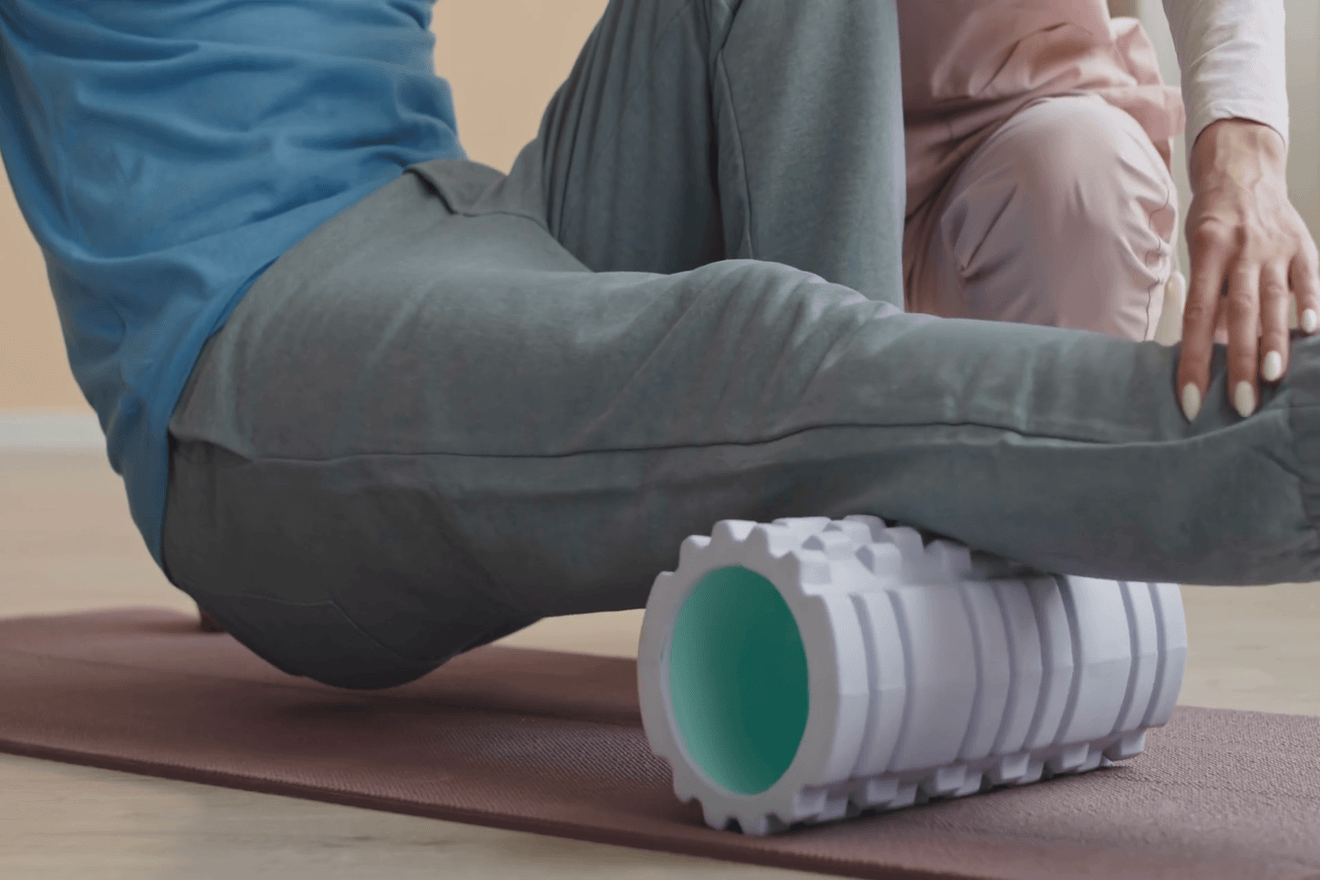Is foam rolling worth it?
Key takeaways
- Foam rolling is still being researched but there are possible benefits in improving flexibility and range of motion (short-term), reducing muscle soreness and tightness and increasing blood flow and circulation.
- Use foam rolling as a complement to your fitness routine. Depending on your purpose, include it as part of your pre-workout warm-up or post-workout recovery.
The hype about foam rolling
Foam rolling has gained considerable attention in the fitness world, often being hailed as a must-do for improving muscle flexibility, preventing injuries, and relieving soreness. If you’ve spent any time in a gym, you’ve probably noticed athletes or fitness enthusiasts rolling before and after their workouts. It’s common to see people stretching their legs, back, and shoulders using a foam roller, hoping to gain relief and improve performance. But is foam rolling really worth the hype?
Before committing to foam rolling as a regular part of your fitness routine, it’s essential to examine the science behind self-myofascial release (SMR), the technique foam rolling is based on. This article will break down what foam rolling actually does, how it might benefit you, and whether the claims surrounding it hold up under scrutiny.
Understanding self-myofascial release
Foam rolling is a form of self-myofascial release (SMR), a technique used to alleviate muscle tightness and improve flexibility. Fascia is the connective tissue surrounding muscles, bones, and organs in the body. When this tissue becomes tight or adherent (stuck), it can create tension and discomfort, leading to reduced range of motion and soreness.
The idea behind foam rolling is that by applying pressure to specific areas of the body, you can help release the adhesions in the fascia and reduce muscle stiffness. The process involves using your body weight to press against the foam roller, creating targeted pressure that supposedly helps break up these adhesions and smooth out the fascia, much like a massage.
The science behind foam rolling
Several studies have been conducted to explore the effects of foam rolling on muscle recovery, flexibility, and soreness. These studies often examine the mechanisms of self-myofascial release and whether foam rolling provides tangible benefits beyond simple stretching.
Improving flexibility and range of motion
Research suggests that foam rolling can enhance flexibility by temporarily increasing the range of motion in muscles and joints. One study found that participants who foam rolled for just 1-2 minutes before exercise had improved joint flexibility and increased performance in activities like squatting. This could be especially beneficial for athletes or anyone who experiences tightness in specific areas, like the hamstrings or lower back.
Reducing muscle soreness
Post-exercise muscle soreness is a common issue for anyone who engages in intense physical activity. While foam rolling may not completely eliminate soreness, studies have shown that it can reduce delayed onset muscle soreness (DOMS) when done after a workout. The mechanical pressure from foam rolling helps to improve blood flow to the muscles, speeding up the removal of metabolic waste products like lactic acid, which can contribute to soreness.
Increased blood flow and circulation
Foam rolling can also boost blood circulation, which is important for muscle recovery. By applying pressure to tight muscles, you may help stimulate blood flow to those areas, allowing nutrients and oxygen to reach the muscles faster. This increased circulation can support the healing of muscle tissue and enhance the delivery of key nutrients that promote recovery. (For those with ongoing circulation concerns, visiting a Vein Clinic in Thornton could help address more serious vascular issues alongside your fitness efforts.)
Reducing tension and tightness
While foam rolling might not permanently resolve issues with fascia, it has been shown to provide temporary relief from muscle tightness and discomfort. The pressure applied during foam rolling can stimulate the nervous system and trigger a relaxation response in the muscles, leading to reduced tension. For individuals who experience muscle tightness due to stress, overuse, or repetitive movements, foam rolling can be an effective tool for managing discomfort.
The Potential Benefits of Foam Rolling
Now that we understand the science behind foam rolling, it’s important to consider the potential benefits it offers. Is foam rolling a worthwhile addition to your fitness routine? While the evidence is still evolving, there are several advantages to incorporating foam rolling into your post-workout regimen or daily routine.
Pre-workout warm-up
Foam rolling can serve as an effective part of a pre-workout warm-up. The increase in blood flow and flexibility can prepare muscles for activity, reducing the risk of injury during exercise. A well-prepared muscle is less likely to experience strains or tears, especially when performing high-intensity or heavy lifting exercises. Foam rolling prior to a workout may also enhance your mobility and help you perform exercises with better form and control.
Post-workout recovery
While foam rolling should not be viewed as a substitute for proper rest and recovery, it can complement other recovery methods. By helping to alleviate tightness and reduce soreness, foam rolling may speed up recovery between workouts, allowing you to train more frequently and effectively. Foam rolling also promotes relaxation, which can be beneficial for mental recovery after a strenuous workout.
Convenience and accessibility
One of the biggest advantages of foam rolling is its convenience. Unlike other recovery methods, such as massage therapy, you can do foam rolling anywhere. All you need is a foam roller and a little time. This makes it an affordable and accessible option for individuals who may not have the time or budget for professional massage treatmen
Any drawbacks to foam rolling?
Despite the potential benefits, foam rolling may not be for everyone. It is important to approach foam rolling with caution, especially if you have pre-existing conditions or injuries. Overuse of foam rolling on sensitive areas can cause bruising or discomfort, particularly in individuals with muscle inflammation or more serious injuries. If you have certain conditions like deep vein thrombosis (DVT) or herniated discs, you should consult with a healthcare professional before using a foam roller.
Additionally, foam rolling is not a magical solution for muscle recovery on its own. It is best used in combination with other recovery methods, such as proper hydration, a balanced diet, and sufficient sleep. Foam rolling should complement, rather than replace, other essential practices for muscle care.
Is foam rolling worth it?
So, is foam rolling worth it? The short answer is yes, but with some caveats. Foam rolling can provide significant benefits in terms of flexibility, muscle soreness reduction, and post-workout recovery. The science supporting these benefits is still evolving, but current research suggests that foam rolling can help improve mobility, alleviate tightness, and enhance recovery time.
Ultimately, foam rolling should be viewed as a tool to supplement other recovery strategies. It’s not a cure-all, but for many people, it can be an effective and accessible way to support muscle recovery and improve flexibility. If you’re looking to improve your fitness routine and relieve muscle tightness, foam rolling may be worth incorporating into your regimen.
As with any fitness practice, listen to your body and consult a healthcare professional if you have any concerns. Foam rolling, when done correctly, can enhance your workouts and contribute to a more balanced, flexible, and healthy body.
Written with the assistance of AI. Reviewed and edited by Marielle Livelo.






